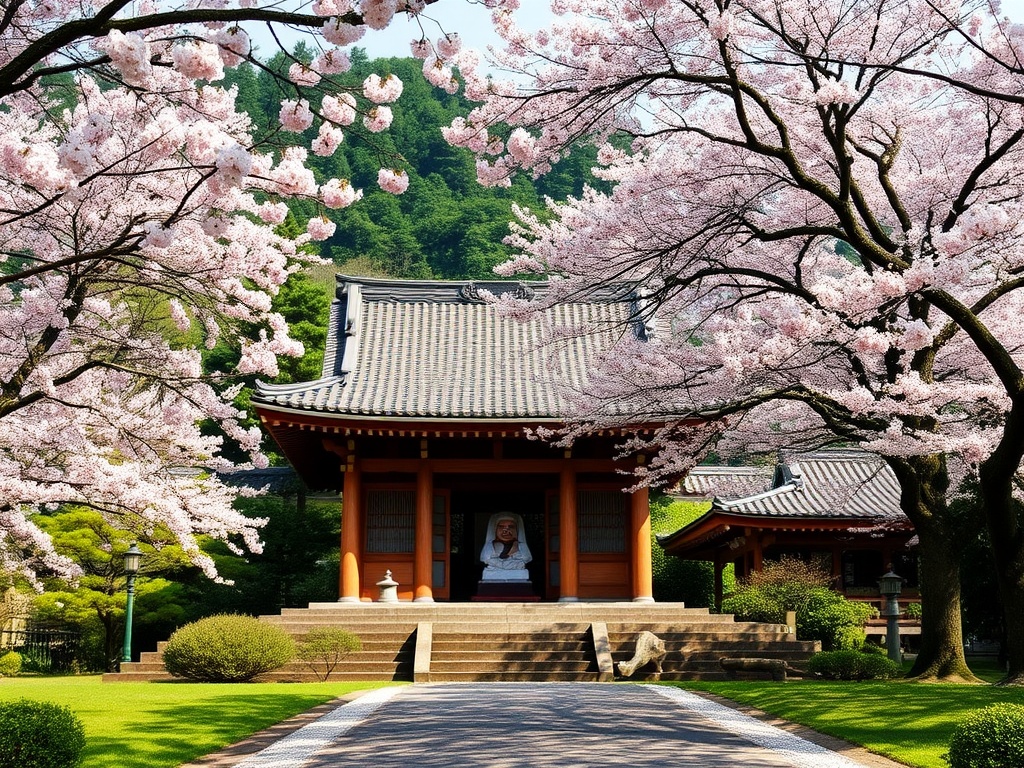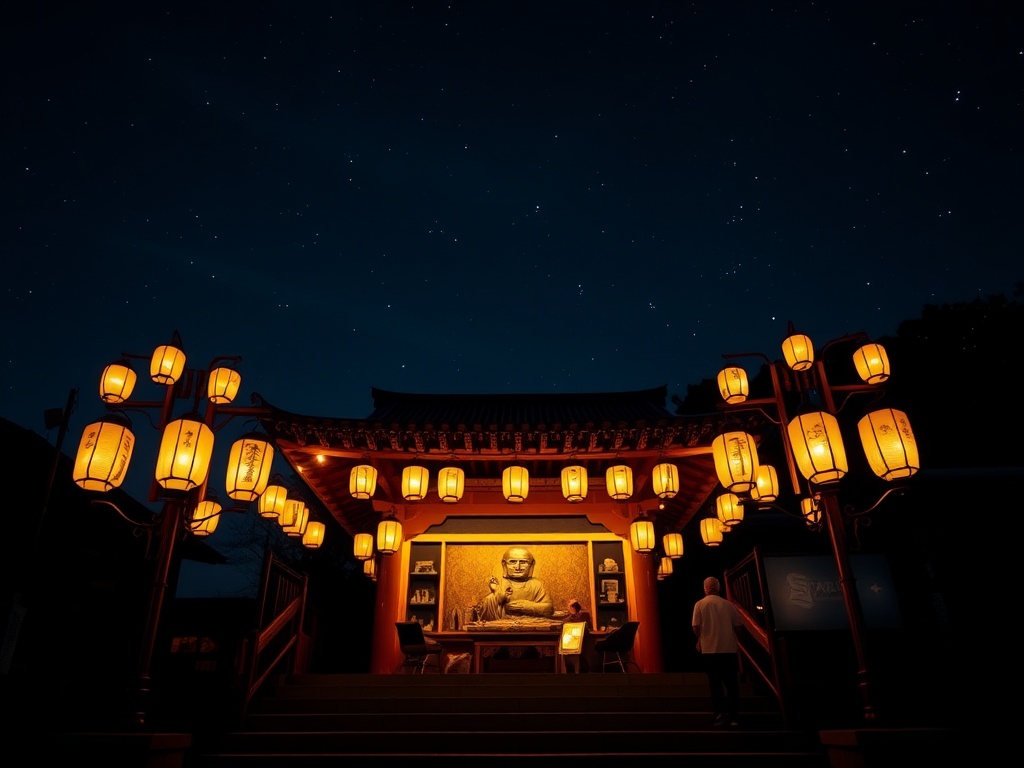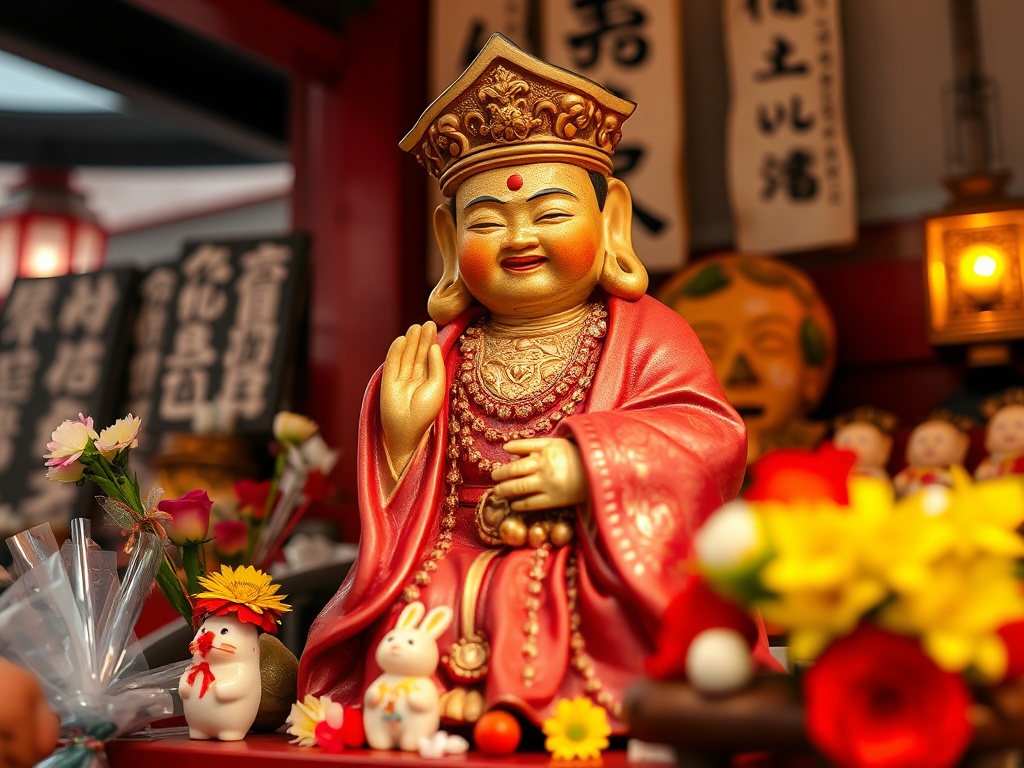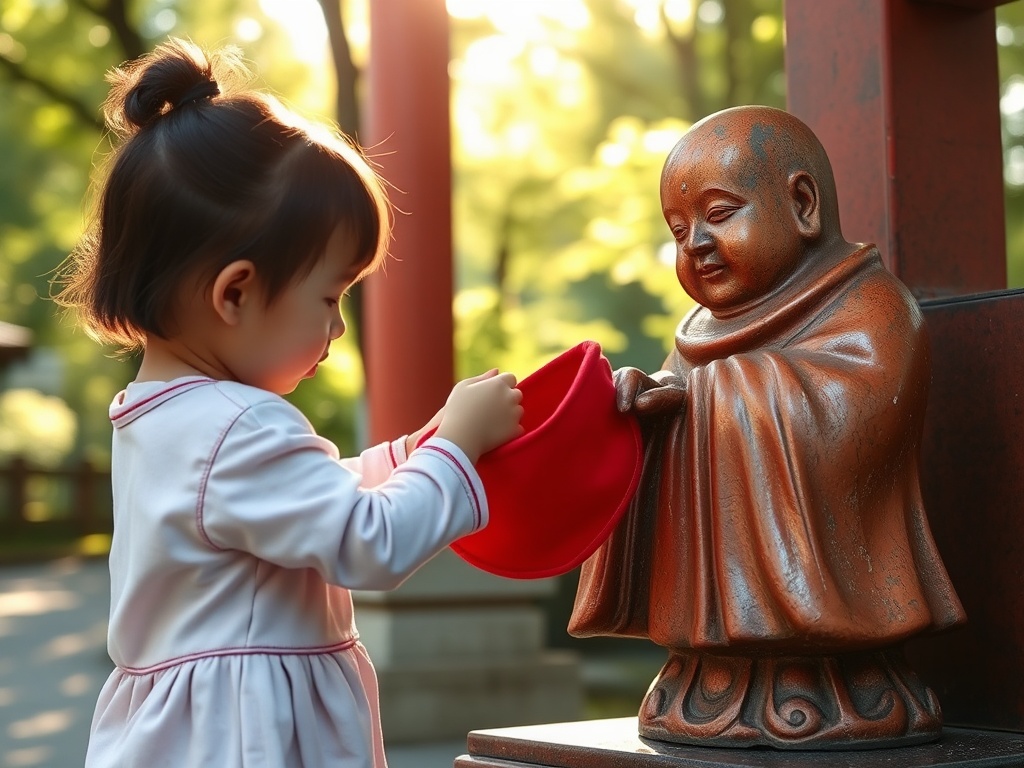Jizo Bosatsu: The Guardian of Souls
Win a Free Trip to Japan!
Experience cherry blossoms and ancient temples
Have you ever wandered through the scenic landscapes of Japan and stumbled upon charming little statues wearing bright red bibs and hats? If you have, you’ve encountered none other than Jizo Bosatsu, affectionately known as Ojizo-sama. These delightful figures aren’t just adorable roadside decor; they are revered guardians, especially for children and travelers. Let’s dive into the enchanting world of Jizo and discover the magic behind these statues!
What Exactly is a Jizo Statue?
Imagine strolling down a peaceful path, surrounded by lush greenery, when you come across a cute little statue with a friendly smile. These are the Jizo statues, and they come in all shapes and sizes! Typically depicted as a small, child-like figure, Jizo Bosatsu is often seen standing solemnly along roadsides, nestled in temple gardens, or even perched on mountain trails, keeping a watchful eye over travelers and lost souls.
Each Jizo statue is usually adorned with a bright red bib and hat. You might wonder, why red? Well, red is a color believed to ward off evil spirits and protect children. That’s right! Whenever you see these cheerful outfits, you can be assured that Jizo is on duty, guarding those in need.
A Peek into the History of Jizo Bosatsu
Let’s take a little trip back in time! The tale of Jizo Bosatsu dates back to the 6th century, when the concept of this compassionate Bodhisattva made its way from China to Japan. Originally known as Ksitigarbha in Sanskrit, Jizo is venerated as the Bodhisattva of the Earth Treasury. Now, what does that mean? Well, Jizo took a vow that he wouldn’t achieve enlightenment until he had saved all beings from suffering. Talk about dedication!
Over the centuries, Jizo’s influence spread like wildfire across Japan. During the Heian period (794-1185), he became a beloved figure among Japanese Buddhists, thanks to the incorporation of Esoteric Buddhism. Today, Jizo Bosatsu is celebrated by various Buddhist sects and remains a cherished symbol of compassion and protection in Japanese culture.
Praying to Jizo Bosatsu: A Heartfelt Practice
Now, let’s talk about the heartfelt practice of praying to Jizo Bosatsu. Picture this: a parent who has lost a child, standing before a Jizo statue, hands clasped in prayer, heart heavy with sorrow. This is a common sight in Japan. Parents often pray to Jizo for the well-being of their departed children, believing that he guides their souls safely to the afterlife. It’s a touching testament to the bond between parents and their children, transcending even death.
But wait, there’s more! Jizo isn’t just a children’s guardian. He’s also the protector of travelers, pregnant women, and anyone facing life’s challenges. Before embarking on a journey, people often stop at Jizo statues to seek protection, leaving offerings as a sign of gratitude. These offerings can be anything from flowers and toys to simple tokens of appreciation, each carrying a heartfelt message.
Why Jizo is So Special
So, what makes Jizo Bosatsu so special? It’s the warmth and compassion that he embodies. These statues symbolize the deep respect Japanese culture has for the welfare of others. Whether it’s a child, a traveler, or even a pregnant woman, Jizo stands as a beacon of hope and safety. His presence is a reminder that we are never alone in our struggles.
- Guardian of Children: Jizo Bosatsu is particularly cherished by parents who have lost children, offering them comfort and solace.
- Protector of Travelers: Before a journey, many travelers stop to pray for a safe passage, leaving offerings at Jizo statues along their route.
- Symbol of Compassion: Jizo statues, often weathered and moss-covered, reflect the deep care and compassion of Japanese culture.
Discovering Jizo in Japan
As you explore Japan, keep your eyes peeled for these charming Jizo statues! You’ll find them in the most unexpected places, from serene temple gardens to bustling city streets. They stand as a testament to the rich history and culture of Japan, reminding us of the importance of compassion and care for one another.
So next time you see one of these adorable little guardians, take a moment to appreciate the story they tell. After all, they’re not just statues; they’re symbols of hope, love, and protection, standing proudly to guide us on our journeys through life!




